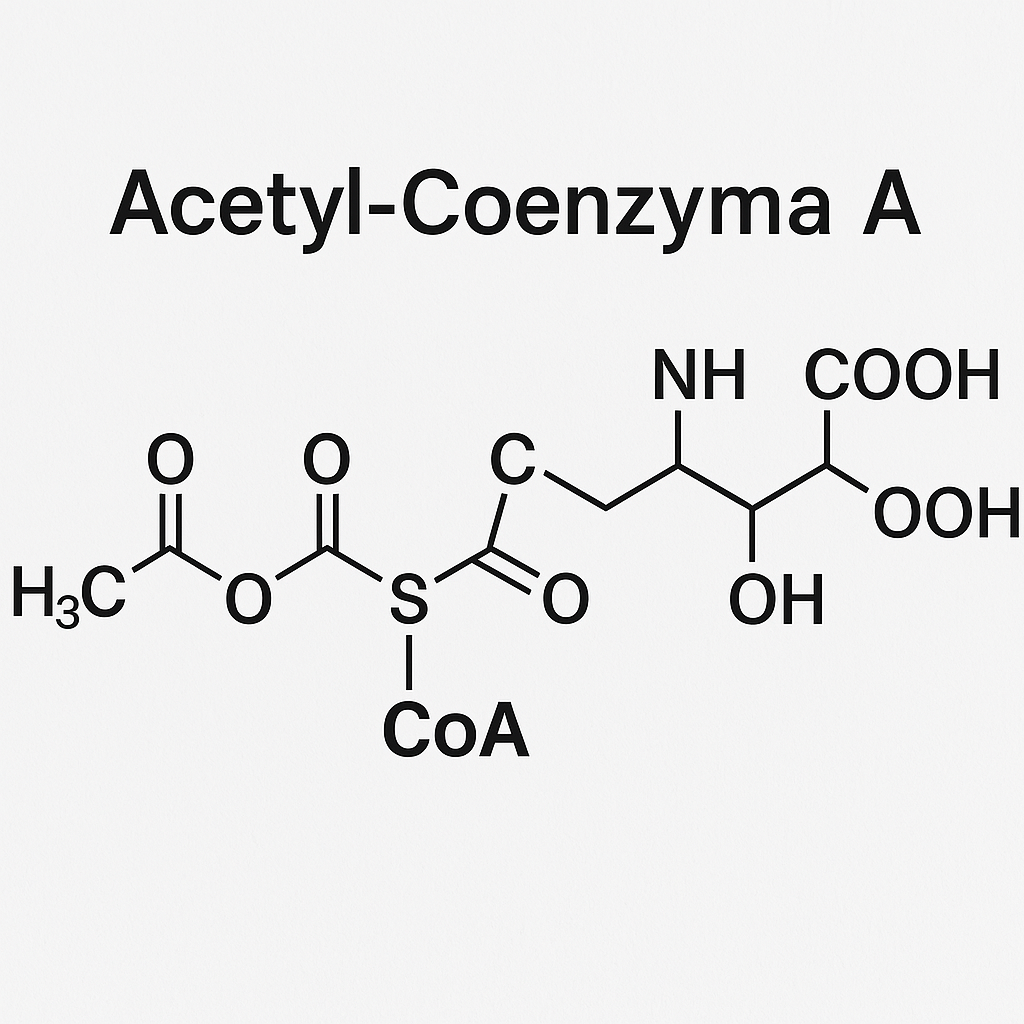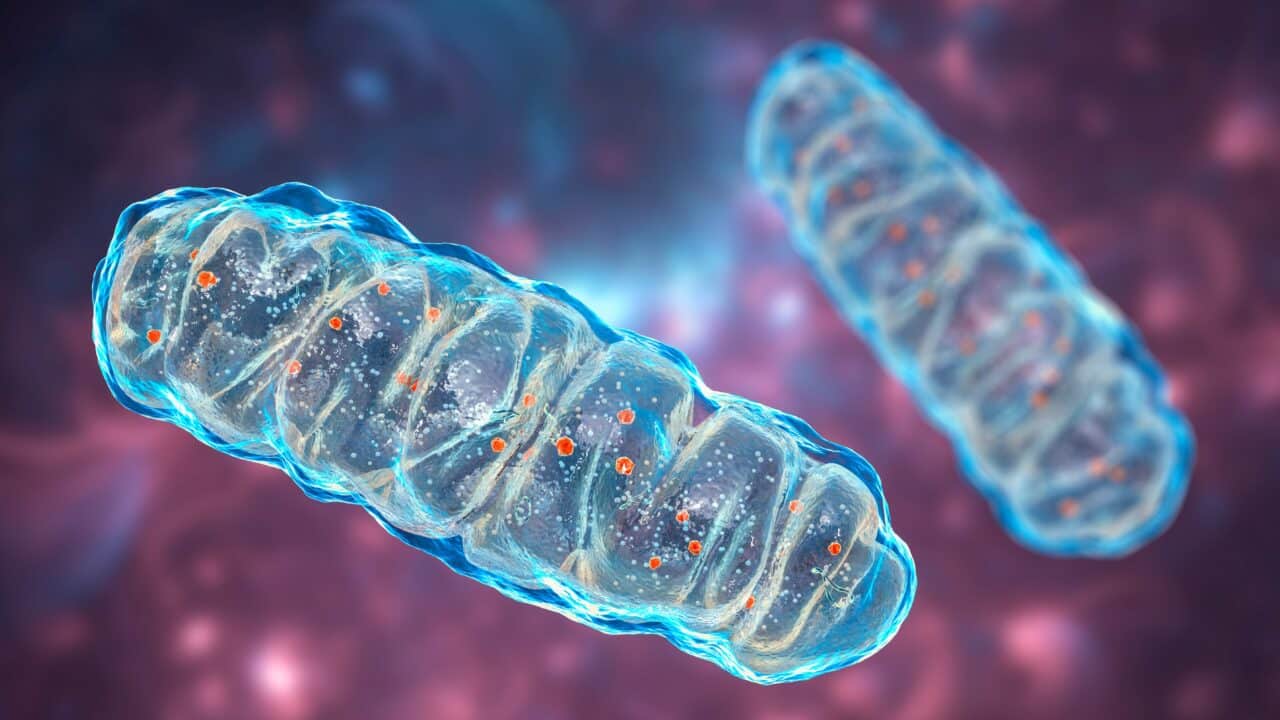Introduction
Acetyl-coenzyme A (Acetyl-CoA) is a critical biomolecule, serving as a key player in many biochemical reactions across various organisms. It is a central molecule in metabolism, involved in the synthesis and oxidation of fatty acids, and the generation of ATP – the cell’s primary energy currency (Smith et al., 2019).
Acetyl-CoA: The Central Metabolic Hub
Acetyl-CoA plays a pivotal role in energy metabolism acting as a central hub in both anabolic and catabolic pathways, linking carbohydrate, protein, and lipid metabolism (Pietrocola et al., 2015). It is produced via the breakdown of carbohydrates (glucose) in a process called glycolysis, the oxidation of fatty acids, and the degradation of amino acids.
In the mitochondria, Acetyl-CoA is a key substrate for the citric acid cycle (also known as the Krebs cycle or tricarboxylic acid cycle), which generates high-energy molecules NADH and FADH2. These molecules then enter the electron transport chain, leading to the production of ATP, the primary energy currency of the cell (Berg et al., 2002).

Acetyl-CoA in Fatty Acid Synthesis and Cholesterol Metabolism
Acetyl-CoA is also a precursor for the biosynthesis of fatty acids and cholesterol. In the cytoplasm, Acetyl-CoA is converted into malonyl-CoA, the first committed step in fatty acid synthesis (Smith et al., 2019). Furthermore, Acetyl-CoA is a crucial building block for the generation of mevalonate, a precursor for cholesterol and other isoprenoids in the mevalonate pathway (Goldstein & Brown, 1990).
The Role of Acetyl-CoA in Protein Acetylation and Gene Regulation
Beyond metabolism, Acetyl-CoA also acts as an acetyl donor in protein acetylation, a post-translational modification that regulates protein function and gene expression (Choudhary et al., 2014). Acetyl-CoA can acetylate histones, the protein components of the chromatin structure, altering gene transcription by loosening the DNA-histone interaction and making the DNA more accessible to transcription machinery (Wellen et al., 2009).
Implications for Health and Disease
Given its central role in metabolism and gene regulation, deregulation of Acetyl-CoA levels can contribute to various diseases, including cancer, neurodegenerative diseases, and metabolic disorders (Pietrocola et al., 2015). For instance, in cancer cells, an elevated level of Acetyl-CoA drives an increased fatty acid synthesis, a common feature of many cancers (Currie et al., 2013).
Conclusion
Acetyl-CoA, with its diverse roles in cellular metabolism, gene expression, and disease, remains a molecule of significant interest in biological research. Understanding the complex interplay of Acetyl-CoA in these processes may provide new therapeutic avenues for treating various diseases.
References:
1. Smith, S., Witkowski, A., & Joshi, A. K. (2019). Structural and functional organization of the animal fatty acid synthase. Progress in Lipid Research, 74, 1–19.
2. Pietrocola, F., Galluzzi, L., Bravo-San Pedro, J. M., Madeo, F., & Kroemer, G. (2015). Acetyl coenzyme A: a central metabolite and second messenger. Cell Metabolism, 21(6), 805–821.
3. Berg, J. M., Tymoczko, J. L., & Gatto, G. J. (2002). Biochemistry. WH Freeman.
4. Goldstein, J. L., & Brown, M. S. (1990). Regulation of the mevalonate pathway. Nature, 343(6257), 425–430.
5. Choudhary, C., Kumar, C., Gnad, F., Nielsen, M. L., Rehman, M., Walther, T. C., et al. (2009). Lysine acetylation targets protein complexes and co-regulates major cellular functions. Science (New York, N.Y.), 325(5942), 834–840.
6. Wellen, K. E., Hatzivassiliou, G., Sachdeva, U. M., Bui, T. V., Cross, J. R., & Thompson, C. B. (2009). ATP-citrate lyase links cellular metabolism to histone acetylation. Science (New York, N.Y.), 324(5930), 1076–1080.
7. Currie, E., Schulze, A., Zechner, R., Walther, T. C., & Farese, R. V. (2013). Cellular fatty acid metabolism and cancer. Cell Metabolism, 18(2), 153–161.

